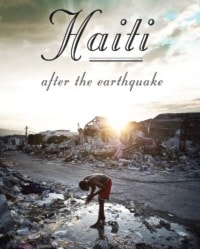TERRI SCHLICHENMEYER
The Bookworm
You’ve seen devastation before. But this one struck your heart.
One minute, everything was fine — the next minute, buildings had collapsed with people beneath them. One minute, sunshine — the next minute, clouds of dust.
It’s been almost two years since Haiti was wracked by earthquakes. So much has happened to that fierce little country, and in the new book Haiti After the Earthquake by Paul Farmer, you’ll read about progress, prevention, and a future the author hopes to see.
On Jan. 12, 2010, Dr. Paul Farmer had just returned stateside from Haiti, having celebrated the holidays with family. Then he got the phone call. There was an earthquake and Port-au-Prince was all but ruined. People were homeless, injured, orphaned. Thousands were dead.
Farmer flew to Haiti to lend help and organization. Port-au-Prince’s main medical centre, General Hospital, was overwhelmed and chaotic and supplies were dwindling but doctors and nurses were foregoing sleep and basic personal care to minister to as many patients as they could.
In addition to a deep look at Haiti’s history and culture, author Paul Farmer offers a firsthand, personal- and internationally-detailed look at what happened in the days and weeks after the earthquake. This beginning section of the book is largely political in nature and quite chaotic, which is mildly interesting - but dry, dry, and dry are three words that really best describe it.
I think that if you’re very heavily into the politics of disaster relief, or if you can skim the first part of this book to get to the last, then Haiti After the Earthquake is worth a look-see. If you want something a little less restrained, though, this book is pretty shaky.
